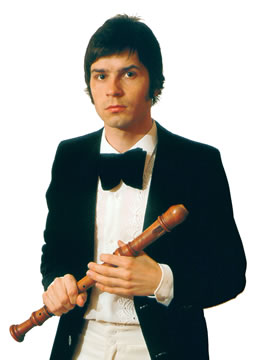When my interest in historical musical instruments was aroused as a teenager, I still had no idea that I would eventually become a professional instrument maker. At first I learned to play the recorder, crumhorn, baroque oboe and, for my very first attempt at instrument making, I constructed a gamba-like string instrument.
I soon realised that I was fascinated by the individual sounds of the various families of instruments. I was particularly captivated by the sound of flutes, especially the so-called internal duct flutes. It was not just renaissance and baroque recorders that intrigued me, but also ancient instruments and members of the flute family that are used in folk music.
To increase my knowledge of recorders and playing techniques, I studied at the Schola Cantorum Basiliensis in Basle. Around 1970, I started working as a recorder-maker but soon discovered that much of the knowledge about the construction of historical woodwind instruments had been lost over the years. Most of my immediate questions remained unanswered and I soon realised that the only way to resolve this was to have direct contact with the original instruments themselves. Fortunately, at that time, it was still relatively easy to gain access to original instruments in museums and so I was able to play and measure some of the world’s most interesting instruments.
![]()

Heinz Ammann 1972 with original recorder from Joh. Christoph Denner
Historical woodwind instruments are unique in the way their inner bore is constructed. This naturally means that the only way to create an identical bore is to have the right tools. This was the main reason that prompted me to start making tools of my own.
I had two principal objectives: I did not simply want to be able to make
copies of instruments. I was also eager to know why they had been constructed
this and not another way. The quest was to find the recipe that would
enable me to make corresponding recorders of different size and pitch.
Secondly, I wanted to investigate thoroughly the connection between mass
and direction of the bore and the sound response qualities of the recorder.
My ultimate aim was to build a complete range: one recorder for each semi-tone
from tenor to sopranino, which would satisfy all needs in 440 and 415.
The ideal sound should emulate the best examples of historical instruments
still in existence. I shall soon have achieved this goal.
My teachers were the old masters who, thanks to the instruments that have been preserved through the ages, gradually gave me insight into their way of thinking and working.
In order to get a feeling for the sound and tone of a recorder, it is
necessary to do more than just copy them precisely. You have to immerse
yourself in the world of yesteryear. You have to explore the social, and
cultural life of the time. A recorder-maker has to be interested in many
other musical instruments and the way they sound. Only by attaining a
delicate balance of all these impressions, is it possible to form an opinion
of one’s own.
Heinz Ammann
more than 30 years of experience in the making of recorders